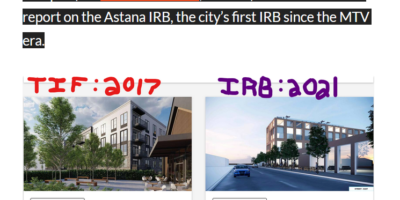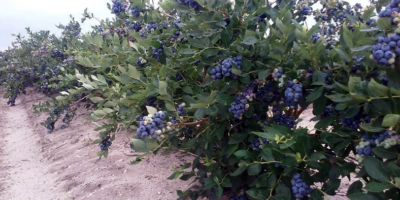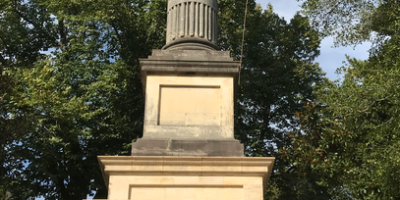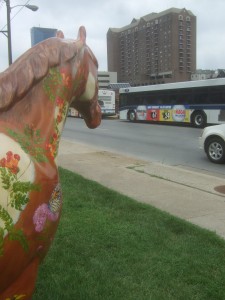The city, its neighborhoods and our public art
By Danny Mayer
After a ten-year hiatus, in mid-July Lexington experienced the return of Horse Mania, a public art project described as “a citywide display of fiberglass horses extravagantly decorated by local artists.” Horse Mania finds local artists decorating one of three models of horse actions: standing, striding or eating. The artists are sponsored by patrons (mostly businesses), and the horses are eventually sold at auction. Proceeds are split between regional charities and public art programs.
The money generated from Horse Mania 2000 reached in the several hundreds of thousands, a figure that the LexArts organizers surely figure to match this year. As a fundraiser, Horse Mania should be a success, a sorely needed, locally rooted stimulus for both the arts and regional non-profits.
Beyond fundraising, the logic behind public art events like Horse Mania goes something like this: public art events draw people into town, downtown, in such a way that they help showcase, to both long-time residents and first-time visitors, the essence of what their city has to offer.
Here in Lexington, that general statement gets translated like this: Horse Mania is successful because it helps hype the coming World Equestrian Games and further supports Lexington’s branding of itself as the horse capital of the world. The colorful and artistic horses help showcase Lexington’s vibrant art scene to out of state visitors unfamiliar with Lexington when they arrive for the Games—potentially with the intent to come back and visit, dine, perhaps even buy a farm on the outskirts here.
For local residents, most of whom don’t have much of a relationship with downtown, the horses provide an attraction that brings people to town and allows them to see firsthand that downtown Lexington is both vital and enjoyable. It also gets them to value and interact with local artists and art.
Real world example of this translation: “It’s clear to anyone who has been downtown this summer that Horse Mania 2010, featuring 83 decorated fiberglass horses, has been enjoyed by residents and visitors alike.” (“Horse Maniacs,” Lexington Herald- Leader, Wednesday August 18, 2010, B-1)
As with other city public art projects—pigs in Cincinnati or Bulldogs in Athens—Horse Mania locates nearly all of its public art in the city’s downtown core. Of the 82 horses listed in the Herald-Leader‘s Horse Mania 2010 guide, a total of 71 reside in a narrow strip of land centered somewhere around Vine Street and Rose.
The strip runs three blocks above and below Main Street between Jefferson on the west and Winchester on the east. Roughly speaking, UK and 3rd Street provide the strip’s southern and northern borders, with horse battalions grouped at Gratz Park/Transy (7 statues), Isaac Murphy (2 statues) and Thoroughbred Park (5 statues) seemingly defending this downtown Horse Mania Zone.
The other downtown
I live on 4th and MLK and travel through downtown to work often enough to encounter many of the horse statues of Horse Mania, but many of my neighbors have no need to cross 3rd and enter into the downtown commercial zone. That part of the city, after all, does not offer much beyond financial planning, city government, eating establishments and bars. Though I haven’t asked, I’m guessing that a good many of my neighbors, who theoretically live downtown, have had little direct interaction with Horse Mania.
Though a small (and speculative) example, it highlights a more general conundrum: downtown has been so narrowly defined to fit within a safe, tourist-friendly and brand-enhancing space, that it has, perhaps unintentionally, sidestepped a majority of Lexington’s downtown residents.
So while the Gratz Park area, one of Lexington’s oldest and richest downtown neighborhoods, gets five horse statues, the Living Arts and Science Center (LASC), located three blocks away on MLK at the corner of 4th, was not allowed to participate in the public art program.
LASC has been a mainstay on the north side for a long time now. It offers a blend of science/art programs to the public, mostly children, and has been a regular patron of Lexington arts. It puts local artists in classrooms with kids of all socio-economic classes, races and ethnicities. It uses its grounds as a sort of public art park and sends student volunteers to London Ferrel garden for hands on learning/work experiences. It is a regular participant in the Gallery Hop. In short, the LASC is a downtown community treasure, one deeply invested in both the arts and its diverse public.
But LASC doesn’t get a horse, and as a result, the public that passes through its grounds on a regular day—artists, students from throughout the neighborhood, city and region, and me and many of my neighbors across the street—gets benignly excluded from a public art project celebrating the city. Ditto for residents on 5th, 6th, Breckenridge, Loudon and points beyond.
A view from the suburbs
But don’t let me get too parochial here. There’s nothing at Living Arts and Sciences Center, but there’s also nothing at La Roca on Limestone, the Co-Op on Southland, or Charlie’s Fish Shack on Winchester. Five horses patrol Thoroughbred Park, but none are to be found at Elizabeth and Douglas Parks. Three in a vacant lot on Vine Street menace bus-travelers and two more cower around a construction site at the southeast corner of CentrePointe; yet no horses roam Cardinal Valley or Kenwick, Castlewood or Clay’s Mill.
If you want public art, Horse Mania’s geography suggests, you must travel to the art; it will not travel to you.
That is of course one model, the corporate one, of public art: put the art where you get the biggest bang for the buck, literally. Centralize, and by all means, seize control of the image. Patrol the borders, plan the city.
But doing so seems perverse, an act difficult to jive with the everyday city. Lexington has a number of micro-neighborhood centers that are the historical remnants of its continued affection for suburban growth. Over the years, these neighborhoods have developed their own distinct geographies, centralized around small corner commercial centers like Romany Road at Cooper and Liberty Road at Winchester.
Right now all these small places need our support—our business. We are in the early moments of what appears to be a long depression, and things are most likely going to get worse. We must begin to get to know each other, our environments, as a precursor to building trust.
A major city event like Horse Mania could have been used to let city residents get to know each other and our different city neighborhods. Instead it required us all to leave our own neighborhoods and visit a narrow city slice that is mostly not representative of Lexington. We learned little, and saw little, of our public.
Considering that it has become a sort of public art hunt, perhaps a better idea—and one we hope is considered in the near future—would be to place Horse Mania’s sculptures throughout Lexington’s many neighborhoods. People might choose to retrace Austin’s bike paths, go have a sandwich at Charlie’s Fish Shack, play a round of disc golf at Shillito Park, drop on by the Kids Cafe on Seventh, shoot some hoops at Douglas Park. Surely some downtown horses could be spared to do that.
Public art for the public
Horse Mania is a wonderful project. Not only does it operate as a fund-raiser for local charities at a time when social services are getting slashed, it is also a much-valued paycheck for artists who are also struggling to get by.
But it is also a manifestation of Lexington’s current failures. The inordinate focus on downtown has diminished all of our own neighborhoods. This applies to urban north side neighborhoods seemingly located downtown and university south side ones, older inner circle suburbs as well as their newer outer rings.
Horse Mania can’t fix Lexington’s failures, but we can ask that its focus on public art be made more available to the public.





Lauren
I live in Chevy Chase and commute to UK and have toodled around downtown several times now. Every time I pass one of the groupings of the horses, it feels jarring–like what is great one at a time is overwhelming all together.
I have seen families wandering around downtown looking at the sculptures–so in that case, you have to drive to see them, but then can go on a walking tour of downtown.
I also would find it interesting to have a conversation about the nature of the art on the horses. Which ones attract who? I think of the glittery one on Main Street as one for a certain sub-set of pre-teen girls. Who likes the simplistic stars near the library? Is it better to go with crazy ones (like the construction one I have a certain fondness for) or with ones riffing on a known theme–like Van Gogh’s Starry Night. Why did the artists chose the theme they did?
I agree with you about the location. I pass many of the horses every day and much prefer the ones that are by themselves. I would also like to see some attempt to beautify suburbs (which I personally find very impersonal–which is why I intend to avoid them if I can in future housing decisions).